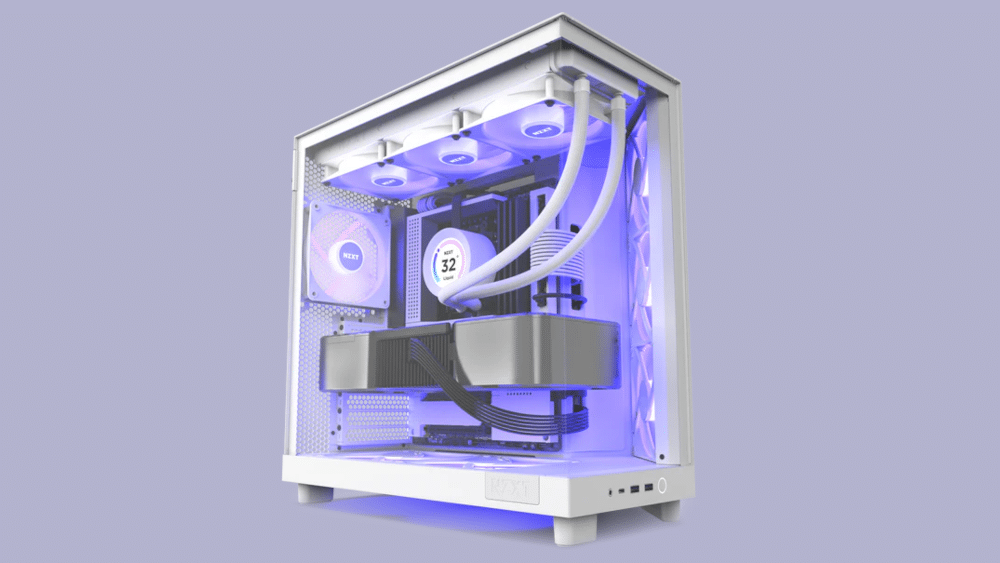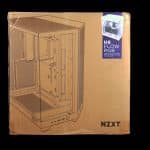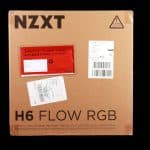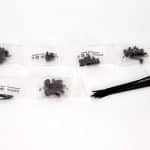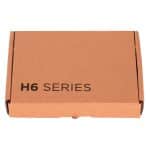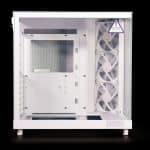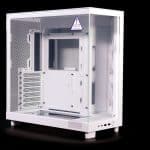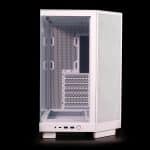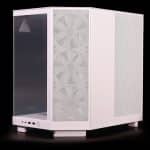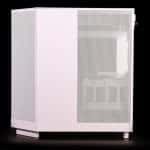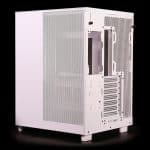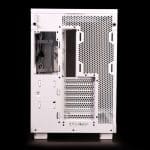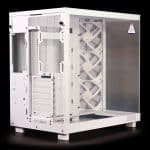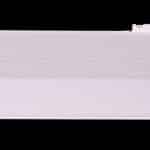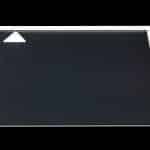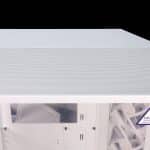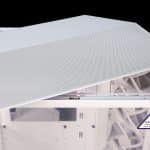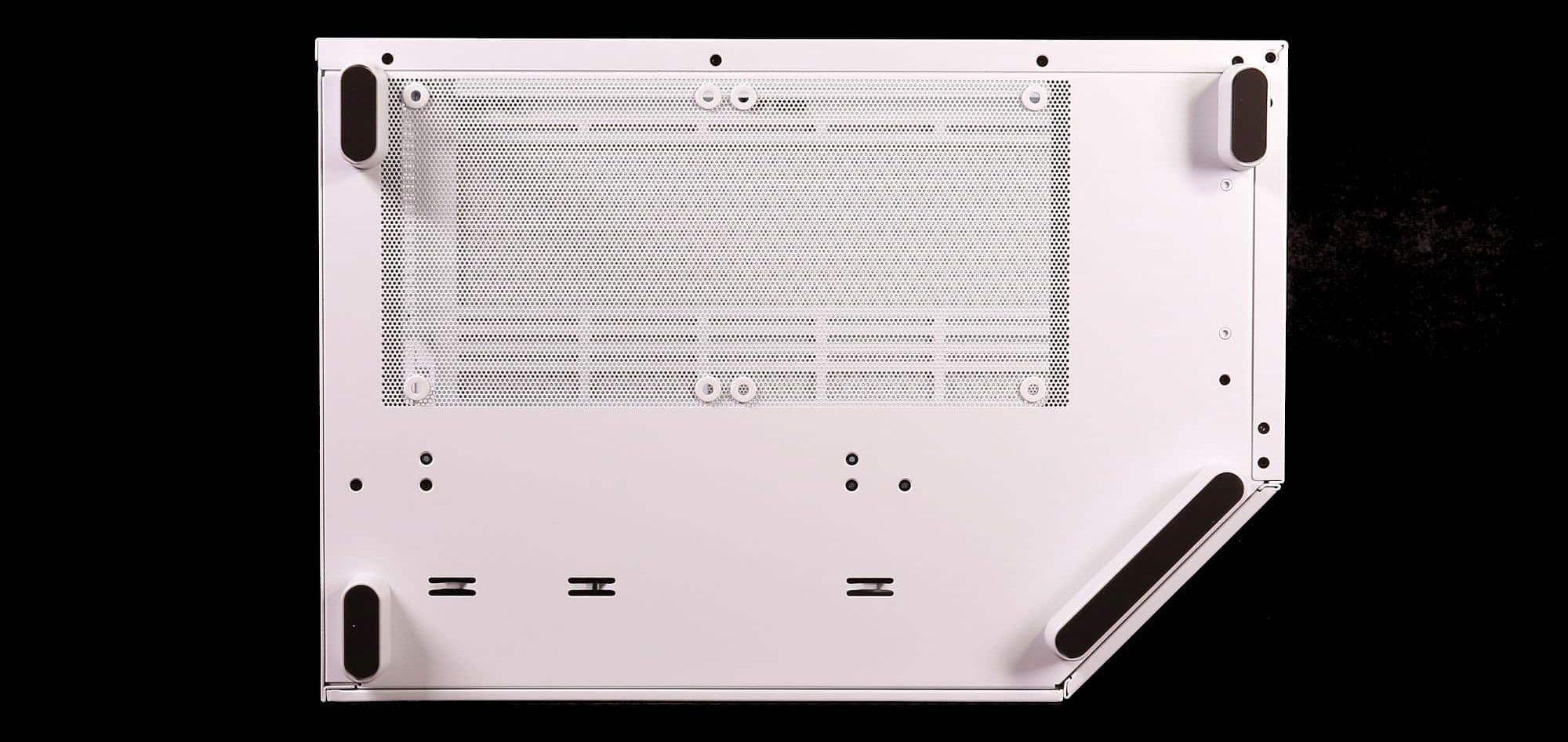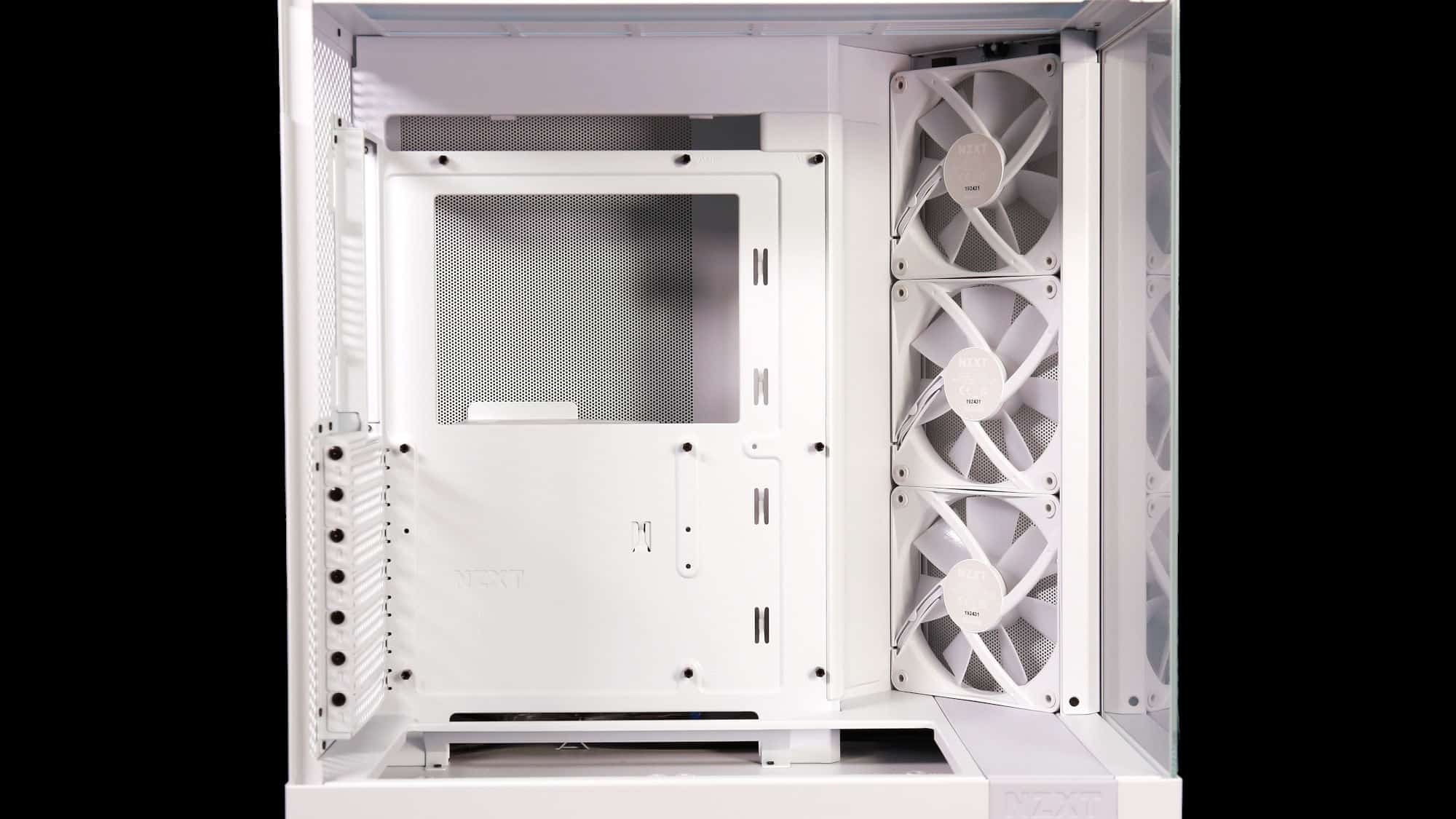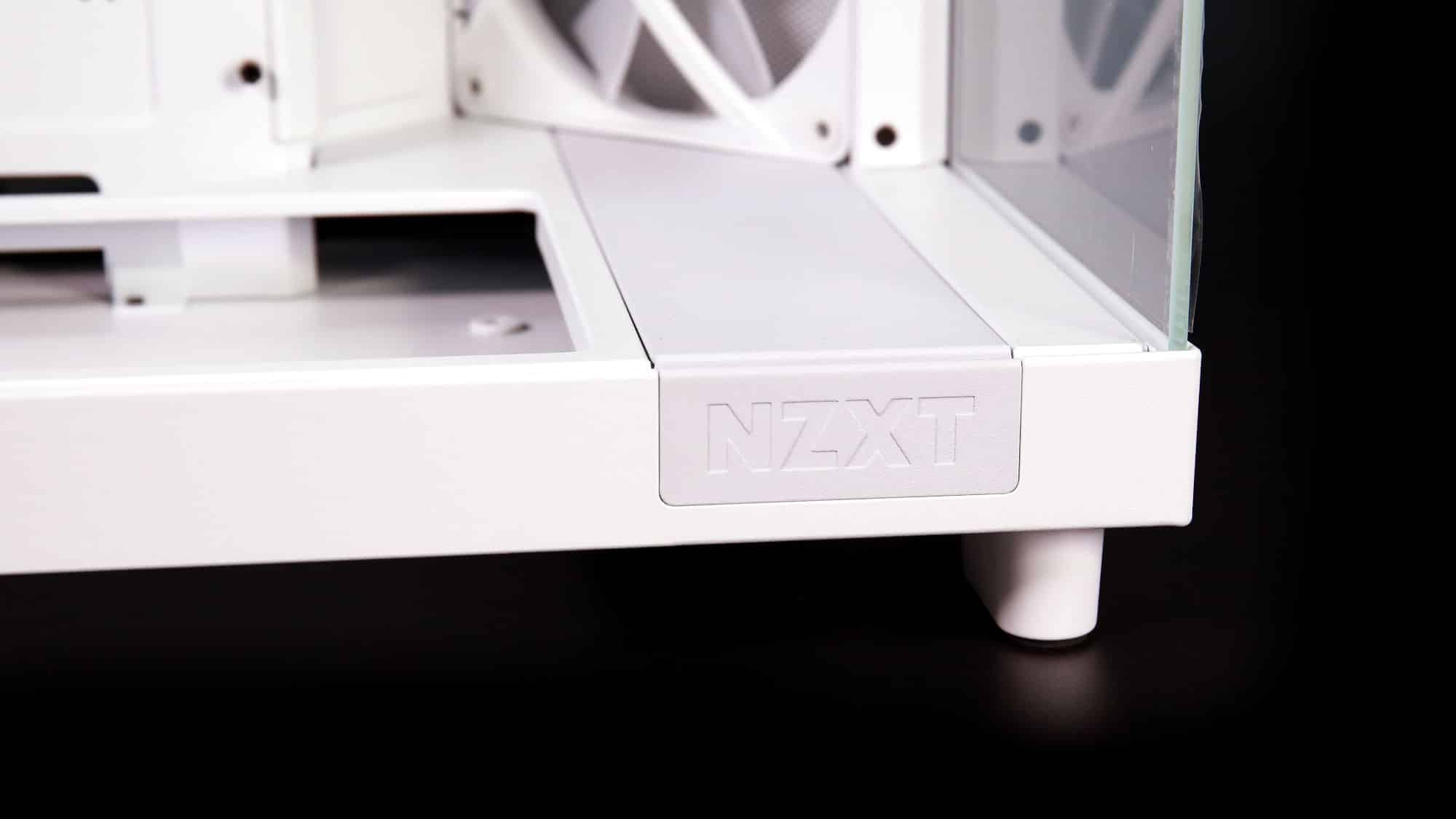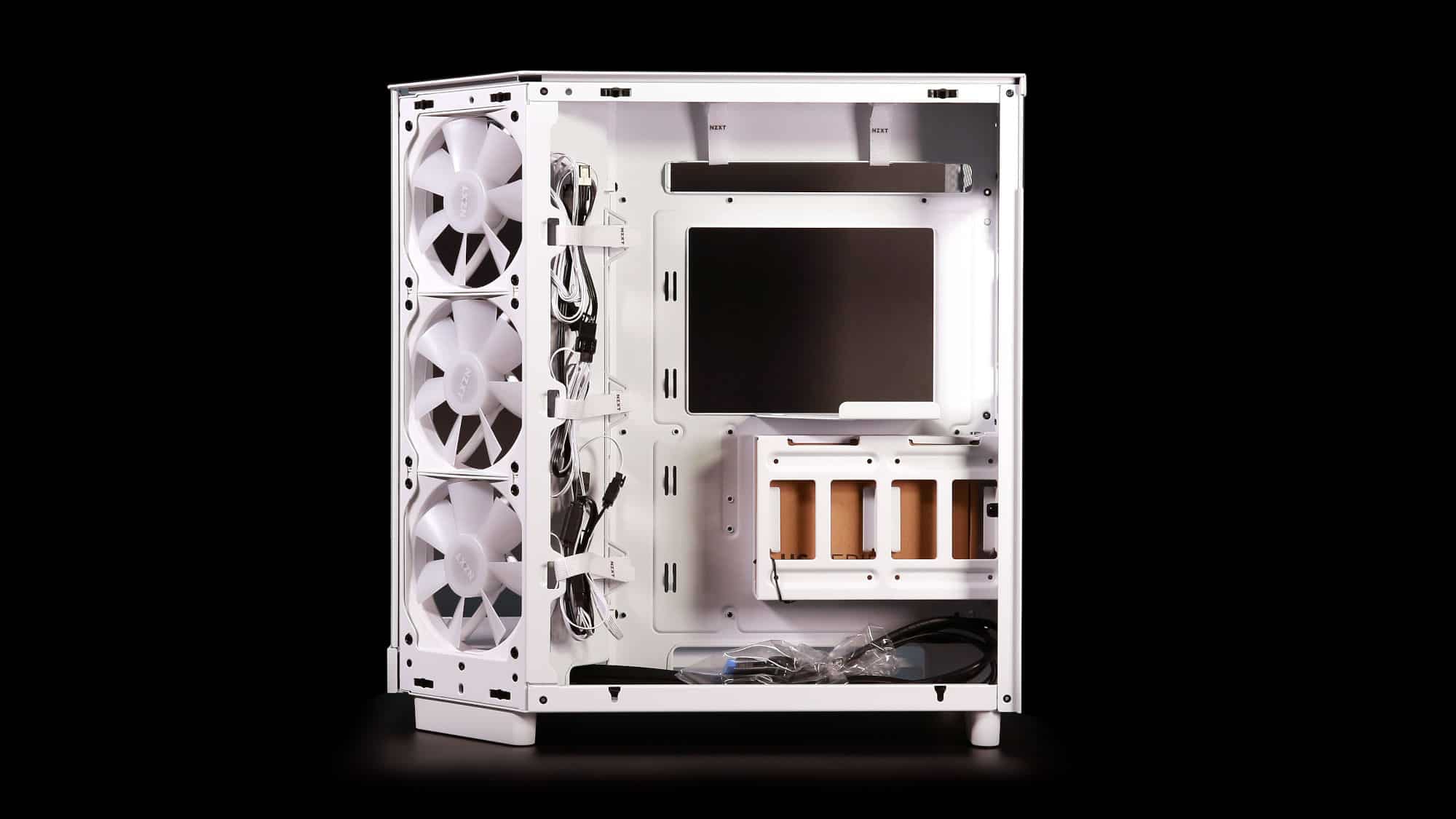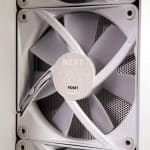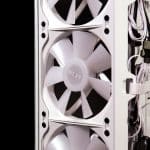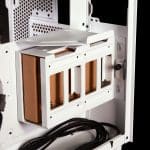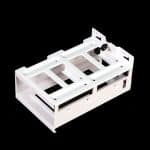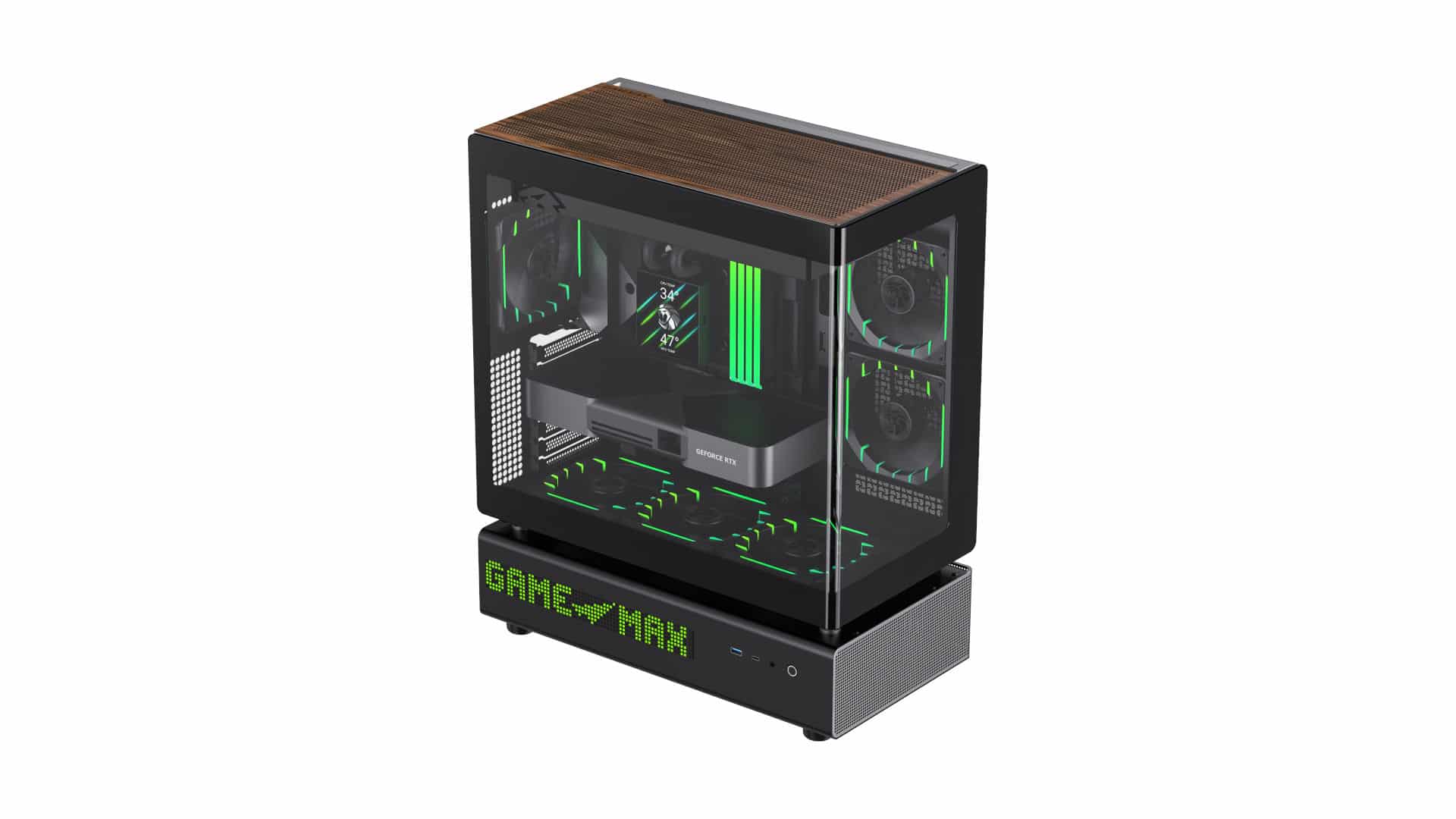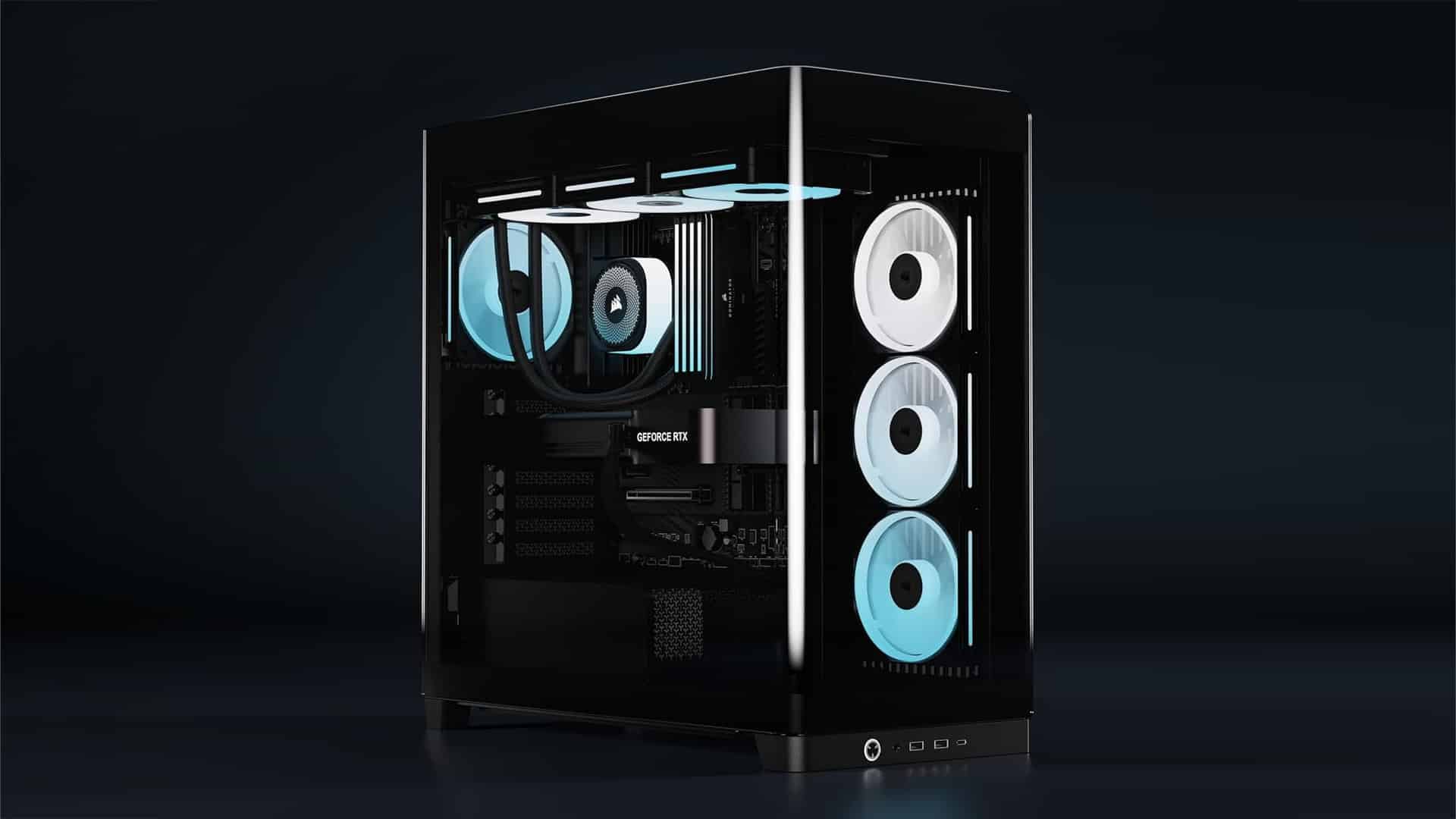Unboxing and First Impressions
As usual, the chassis arrives in a brown cardboard box with large foam inserts to absorb impacts, and a cardboard spacer between the side and front glass. The included accessories are similar to previous NZXT cases: a variety of screws, zip ties, and a leaflet packed in a ziplock bag for protection.
The first impression is that of a high-quality chassis, consistent with the latest NZXT cases we’ve reviewed. This is the first white variant we’ve seen in person, and the color is excellent. White is notoriously difficult to get right, especially across different materials, but here NZXT has used the same steel both inside and out. The integrated mesh in the steel panels eliminates the need for color-matched plastics, which works in NZXT’s favor. The chassis looks spacious, and while the height is significant, it translates into ample room for your components, including cooling.
Design and Build Quality
Starting from the side, the large piece of tempered glass is mounted to a steel base that covers three of its four edges, leaving the edge next to the front glass fully exposed. This design creates a visual continuity between the side and front glass panels. On the black version, the glass is slightly tinted.
The front glass is relatively small, as part of the front panel is taken up by the angled mesh section. However, it’s large enough to host the I/O at the bottom, which includes two USB Type-A ports, one Type-C port, a combo audio jack, and the power button. Notably, the Type-C port supports 20Gbps via a USB 3.2 Gen 2×2 connection.
The angled panel features mesh to allow airflow and, like the rest of the panels, is toolless. A nicely embossed NZXT logo sits at the bottom. Note that the mesh panel is the same type we have seen in the rest of the lineup. In addition, they all use thumbscrews for toolless removal.
The rear and top panels are similarly perforated, aiding airflow throughout the chassis. The rear of the main chamber supports a 120mm fan (height adjustable) and includes seven bridgeless expansion slots. The secondary chamber houses the PSU at the top, mounted directly without a bracket, and provides several hooks for cable management. Drive bay mounting points are also visible, though not typically in view during use.
At the bottom, we find the feet, which raise the chassis significantly off the ground, improving airflow, unlike the H7 and H5 models, which have portions of the case that extend to the floor.
Compatibility and Space Utilization
Being a dual-chamber case, the main chamber is spacious, fitting full ATX boards and some E-ATX models. There’s room at the bottom for inset fans and plenty of clearance at the top for AIOs. GPU clearance is up to 365mm, and CPU cooler height support is up to 163mm.
A grey NZXT-branded decorative strip runs inside the main chamber. It can be removed to improve access to front I/O cables, but otherwise doesn’t serve a functional purpose.
The secondary chamber is also roomy. The PSU mounts at the top, so CPU and rear fan cables should be routed before installation, making a modular PSU highly recommended (common among modern units). Below the PSU is the storage tray, secured with a thumbscrew.
Looking toward the front fans, you’ll notice a large number of cables. Fortunately, they are tucked into the secondary chamber, and numerous hooks and pre-installed Velcro straps aid cable management. We’d prefer Velcro straps in the accessory bundle instead of single-use zip ties.
The I/O cables are not color-matched, though this doesn’t matter, as they’re not visible. Fan cables are white, but their connectors are black, a bit of an odd choice. The included 3-to-1 PWM and ARGB splitter cables are also black. The Velcro straps, however, are color-matched.
Cooling and Airflow
The H6 Flow comes with three pre-installed intake fans behind the angled mesh panel. This orientation provides more effective airflow than standard side intake and takes up minimal space in the main chamber, though it slightly encroaches on the secondary chamber.
At the top, you can install up to three 120mm fans or a 360mm AIO. Although there are extra mounting rails, NZXT doesn’t officially support 140mm fans here. Still, the top area is roomy, with ample vertical space above the motherboard for larger cooling setups.
At the bottom, there’s room for two 120mm intake fans, provided the models fit properly. The rear supports a single 120mm fan, with adjustable vertical positioning. It would have been nice to see a fourth fan included as a rear exhaust to round out the basic cooling setup right out of the box. Nonetheless, fan performance for the stock fans can be reviewed here.
It’s worth noting that the included fans are “Case Versions,” meaning they spin slower and run quieter than their standalone counterparts.
Storage Options
As with the H5 and H7, traditional storage support is limited. The only drive mount is the storage cage, which supports one 3.5-inch and two 2.5-inch drives simultaneously. NZXT could have designed it to support two 3.5-inch drives; there’s 91mm of depth in the secondary chamber, which would have allowed it.
